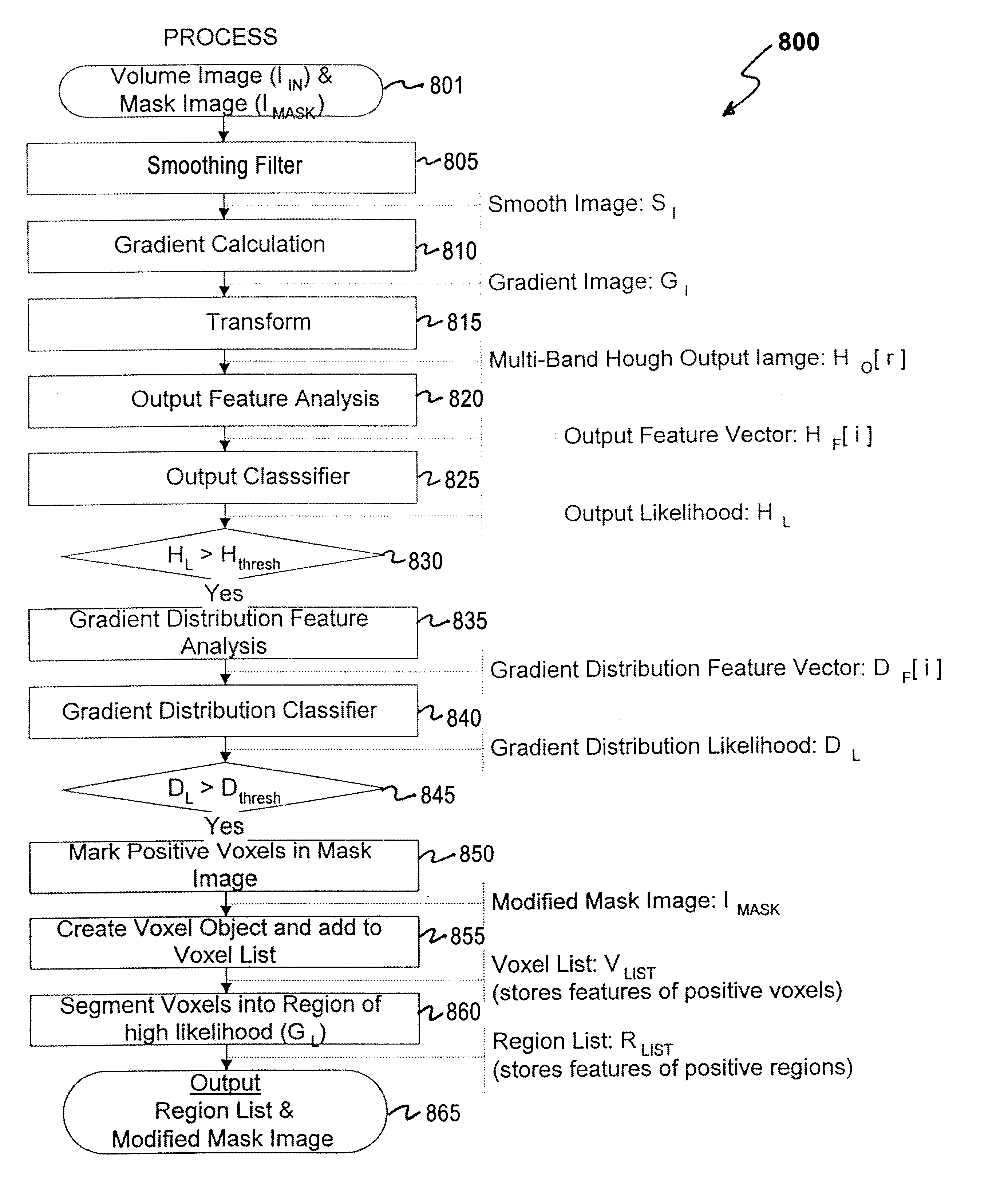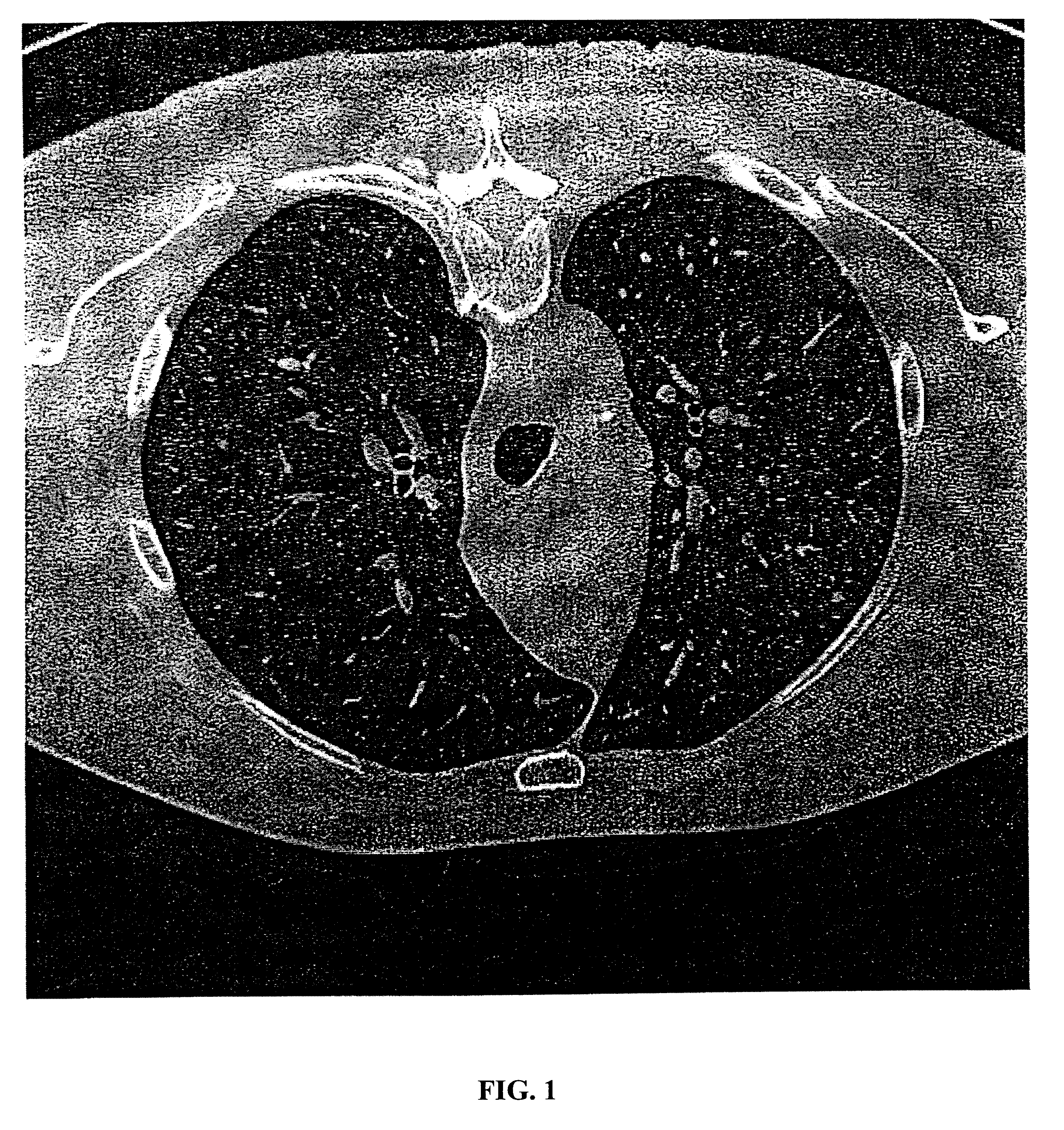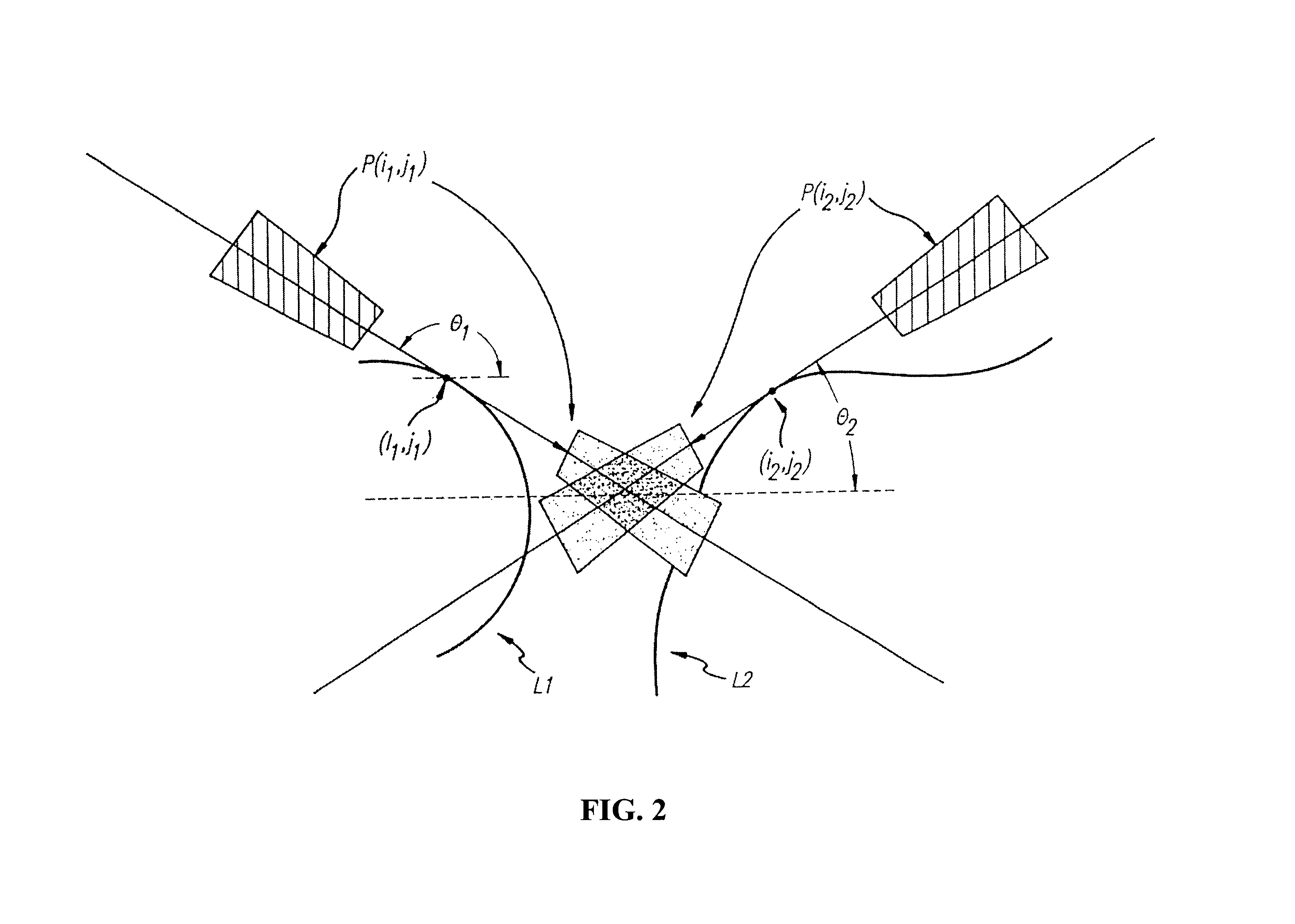Density nodule detection in 3-D digital images
a density nodule and digital image technology, applied in the field of computer-aided detection of abnormal lesions and features in digital images, can solve problems such as speed and accuracy in processing, and achieve the effect of fast and effective overall algorithm and quick identification of regions
- Summary
- Abstract
- Description
- Claims
- Application Information
AI Technical Summary
Benefits of technology
Problems solved by technology
Method used
Image
Examples
Embodiment Construction
[0034]The present invention provides for systems and methods capable of effective and accurate detection of suspicious features identified from 2-D and 3-D digital images. A 3-D digital volume can be generated from the 2-D slices by any one of various techniques known in the art. The terms “digital” and “digitized” as used herein will refer to images or volumes, as appropriate, in a digital or digitized format acquired via a digital acquisition system or via conversion from an analog image.
[0035]The digital image sections and volumes to be processed, rendered, displayed or otherwise used include digitized images acquired through any plane, including, without limitation, saggital, coronal and axial (or horizontal, transverse) planes and including planes at various angles to the saggital, coronal or axial planes. While the disclosure may refer to a particular plane or section, such as an axial section or plane, it is to be understood that any reference to a particular plane is not nec...
PUM
 Login to View More
Login to View More Abstract
Description
Claims
Application Information
 Login to View More
Login to View More - R&D
- Intellectual Property
- Life Sciences
- Materials
- Tech Scout
- Unparalleled Data Quality
- Higher Quality Content
- 60% Fewer Hallucinations
Browse by: Latest US Patents, China's latest patents, Technical Efficacy Thesaurus, Application Domain, Technology Topic, Popular Technical Reports.
© 2025 PatSnap. All rights reserved.Legal|Privacy policy|Modern Slavery Act Transparency Statement|Sitemap|About US| Contact US: help@patsnap.com



